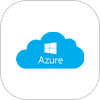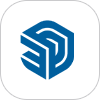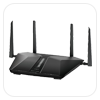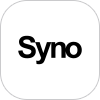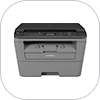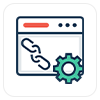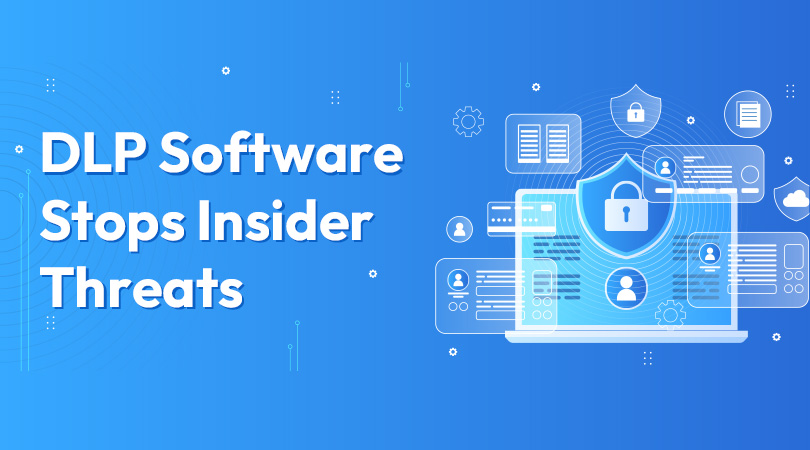
The risk of data breaches is ever-present for companies of all sizes. While external cyberattacks often make larger headlines, a significant and frequently overlooked risk comes from within: insider threats. Both malicious and unintentional insider threats can expose organizations to data breaches that can have a substantial financial impact, reputational damage, and potentially, litigation.
One of the most valuable tools that an organization typically has available to combat insider threats is Data Loss Prevention (DLP) software. It tracks and identifies sensitive data, preventing it from being leaked outside the organization. DLP can help limit the potential threat posed by someone within the organization.
What is an Insider Threat?
Insider threats exist in many different forms. It’s not always about an employee stealing information illegally. Insider threats include:
- Malicious insiders: A malicious insider wants to hurt the organization. In every organization, confidential data can be stolen, blocked systems or goals can be compromised, or sensitive data can be leaked for their gain or other reasons.
- Negligent Insiders: Negligent insiders are individuals who unintentionally act in a manner that causes a breach. These behaviors were caused by negligence or mistakes, not with the intention of breaching data. They could mistakenly send an email with sensitive files to the wrong person, copy sensitive documents to their personal unencrypted device, or click on a phishing link.
- Compromised insider: They are legitimate users whose accounts were misused by outside users. This means that the first step involved an external user compromising the insider, but once compromised, the insider’s credentials can be used to enter the inside, gain access, and exfiltrate data.
Every insider action, whether intentional or not, can lead to a major data breach. DLP software can play a major role in protecting against all types of insider threats.
How DLP Software Prevents Insider Threats
DLP software employs various methods to detect and prevent insider data loss hazards. Here is how it effectively approaches insider threats:
-
Data Discovery and Classification – Knowing What Needs Protection
The first step in preventing data loss hazards is knowing what sensitive data you have and where it’s located. By design, DLP solutions prioritize data discovery by scanning endpoints, data at rest in networks and clouds, and data repositories, seeking to identify sensitive data.
When DLP software detects sensitive data, it employs various data classification techniques to identify the sensitive data, or more importantly, the level of sensitivity associated with the data. Data classification can involve previously defined rules, content analysis (including words, phrases, keyword searches, and patterns such as credit card numbers and machine learning software). The discovery and classification of sensitive data to determine its location are important for successful protection against data loss. Protecting against data loss is not only for malicious attacks but also for unintentional disclosures of sensitive data.
-
Content-Aware Monitoring – Tracking Data In Motion, Data At Rest, and Data In Use
DLP software provides continuous monitoring of data, irrespective of state:
- Data in Motion: DLP can monitor your network and traffic (including email, web uploads, and file transfers) to detect sensitive data being shared outside authorized means. It identifies and blocks unauthorized attempts to send sensitive information via email, instant messaging, and file-sharing apps.
- Data at Rest: DLP agents scan for data stored on endpoints, servers, databases, end-of-life servers, and cloud storage to ensure that data is being stored properly and in compliance with your organization’s security policies. It can identify sensitive data being stored in unencrypted locations or with inappropriate access permissions.
- Data in Use: DLP will monitor users’ actions on an endpoint, such as moving, copying, printing, or modifying sensitive files. It can actually prevent users from doing things with sensitive data, even if they have logical access permissions.
This continuous content-aware monitoring enables DLP to detect and prevent intentional and unintentional data leakage by insiders. For example, if an employee opens a spreadsheet containing customer financial data and then tries to email it to their personal email address, a DLP data-leak event will detect the sensitive data and automatically block the action.
-
Enabling Policy Enforcement: Parameters on Data Handling
DLP software enables organizations to specify fine-grained security policies for the handling of sensitive data. These policies can be made for specific data types, user groups, and applications. By implementing these policy rules, DLP can help mitigate the potential for negligent insiders to expose data and hinder malicious insiders from knowingly exfiltrating information. When a person performs an action that is not in accordance with a DLP policy, the software can prevent the action from occurring, alert administrators, or even inform the user that a policy violation has occurred.
-
Contextual Awareness: The “Who, What, Where, When, and How” of Data Access
Modern DLP solutions do more than identify sensitive content. They assess and consider contextual information around data access and use. Contextual information can include:
- Who: The user who is accessing the data.
- What: The data being accessed or copied.
- Where: The location of the data and where it is being sent, if a transfer is involved.
- When: The time that the access or transfer took place.
- How: The way the data is being accessed or transferred, e.g., email, USB drive, or upload to the cloud.
By incorporating this context into the analysis, a DLP can make more intelligent decisions about whether to allow, block, or monitor an action. For example, a user might be allowed to copy a non-sensitive document to a USB drive, but copying a document with customer PII would be blocked. This context would increase the likelihood of reducing false positives and ensure that the appropriate security controls are in place.
-
User Behavior Analytics (UBA): Identify Anomalous Insider Behavior
Many advanced DLP solutions also include User Behavior Analytics (UBA) capabilities. It establishes what normal user activity is for an organization and then identifies activity that deviates from that established baseline. This can be valuable for helping to identify potentially malicious insider activity that could go undetected by traditional rule-based DLP policies.
For example, if an employee who only accesses a very limited number of files suddenly appears as an unusual user because they are now accessing and downloading huge amounts of sensitive data, UBA and DLP would create a response that identifies the abnormal actions of the user and flags them for alerts or mitigative responses. These capabilities are effective means for advanced detection of compromised insiders or malicious insiders attempting to escalate their privileges or exfiltrate large datasets from their organization.
-
Incident Response and Forensics: Identifying and Responding to Breaches
While the best proactive and preventative measures can be put in place, breaches can and will still happen. DLP software is crucial for incident response to breaches, as it alerts security to policy violations and logs them, and also notifies security of potential data loss events. DLP is valuable because it enables a security team to quickly identify, investigate quickly, and contain incidents involving sensitive data.
Forensics is where the value of the audit trail and logs from DLP tools comes into play, helping organizations understand the extent and damage of a data breach, as well as identify the responsible parties as either malicious or negligent, and determine the necessary remediation steps.
The Partnership of DLP and Insider Threat Mitigation
DLP software should not be considered the only solution, but it is an essential part of an insider threat mitigation plan. DLP can significantly enhance an organization’s efforts to protect itself from data breaches caused by the insider threat when used with other key security measures, such as robust authentication, access controls, security awareness training, and employee monitoring. By identifying, monitoring, and controlling the use and movement of sensitive data, DLP can help an organization accomplish the following:
- Decrease the chances of accidental data leaks by negligent insiders using DLP data loss prevention.
- Identify and stop malicious insiders from stealing or exfiltrating sensitive data.
- Identify compromised accounts based on unusual patterns of data access.
- Monitor and identify how data is being handled across the organization.
- Gain compliance with data privacy requirements.
Conclusion
In an environment where insider threats are on the rise, preventing data breaches will require a deliberate and comprehensive approach. Insiders are not just a risk, but a threat, when exploited by those with malicious intentions. DLP software represents a valuable technology within this battle. It allows you to add additional visibility and control to protect sensitive data and information from the risks posed by insiders, including all people within a space that organizational leaders can’t control. Through efforts to see the worth of the data that we must be secured, how data is being transported and utilized, looking for proof of transgression, developing a compliant security policy, integrating this into an effective strategy, utilizing contextual awareness and behavior analytics, we start to minimize the attack surface and strengthen the organization’s footing to detect, deter, prevent, or recuperate from instances of data loss due to insider activity. DLP is not only a best security practice; it is a significant step toward a secure and productive digital cyber environment built upon trust.

































